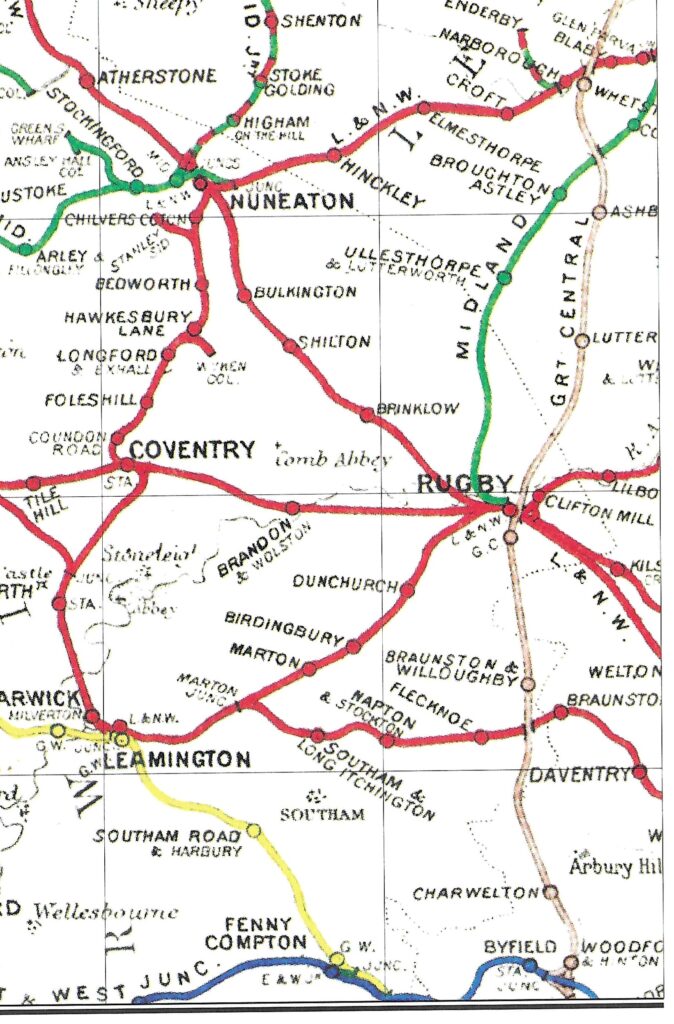The advent of the London to Birmingham Railway which opened locally in 1838 resulted from significant engineering work in Church Lawford, with the local impact discussed here. Perhaps the bigger impact was how the Railways facilitated the movement of freight and people around the country, especially given the importance of Rugby as a Railway hub. By 1847 the town was linked to much of England – as well as to Scotland via the West Coast Mailine.
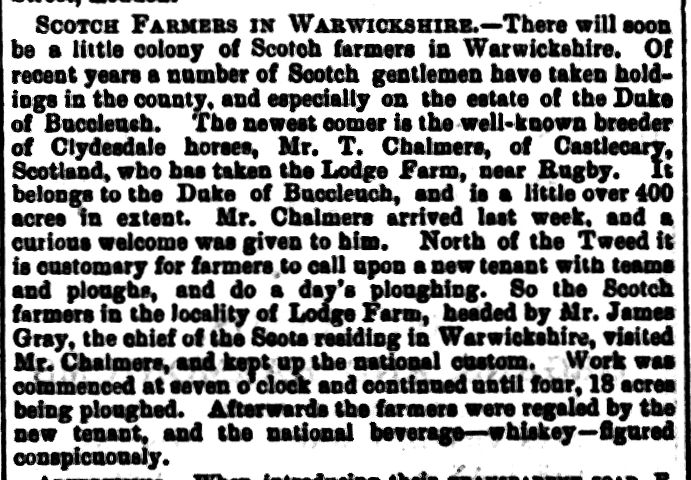
By the start of the twentieth century the Rail Connectivity to Rugby had reached its peak, and prior to the First World War there was little competition to the Railways in terms of rapid transportation of both people and freight.
The two villages did not have a station of their own, but had local stations at either Dunchurch, Brandon or Brinklow, or road connections to Rugby station. From there many places could be reached via a direct train. Sample timetables from 1913 are shown below, taken from the Rugby Advertiser of the time – they were later to publish these timetables separately with a nominal extra charge. Although the quality of these 1913 newspaper scans is quite variable, they give a more precise summary of the trains available from Rugby than the more comprehensive timetables in the likes of the regular “Bradshaws Guide” which show many more trains on the longer distance routes that do not stop locally. The more comprehensive timetables are available in PDF format for the following years by clicking on the link.
Additionally there is a summary of trains from Rugby to various points in England and Wales from 1952, as published by Lunn Poly in Regent Street Rugby.
The map below shows the connectivity to Rugby. It is available in the Book “Rugby’s Railway Heritage” by PH Elliot, published in 1985, a copy of which can be found in Rugby Library. Much of the information in this article has been reviewed in much greater depth in that book.
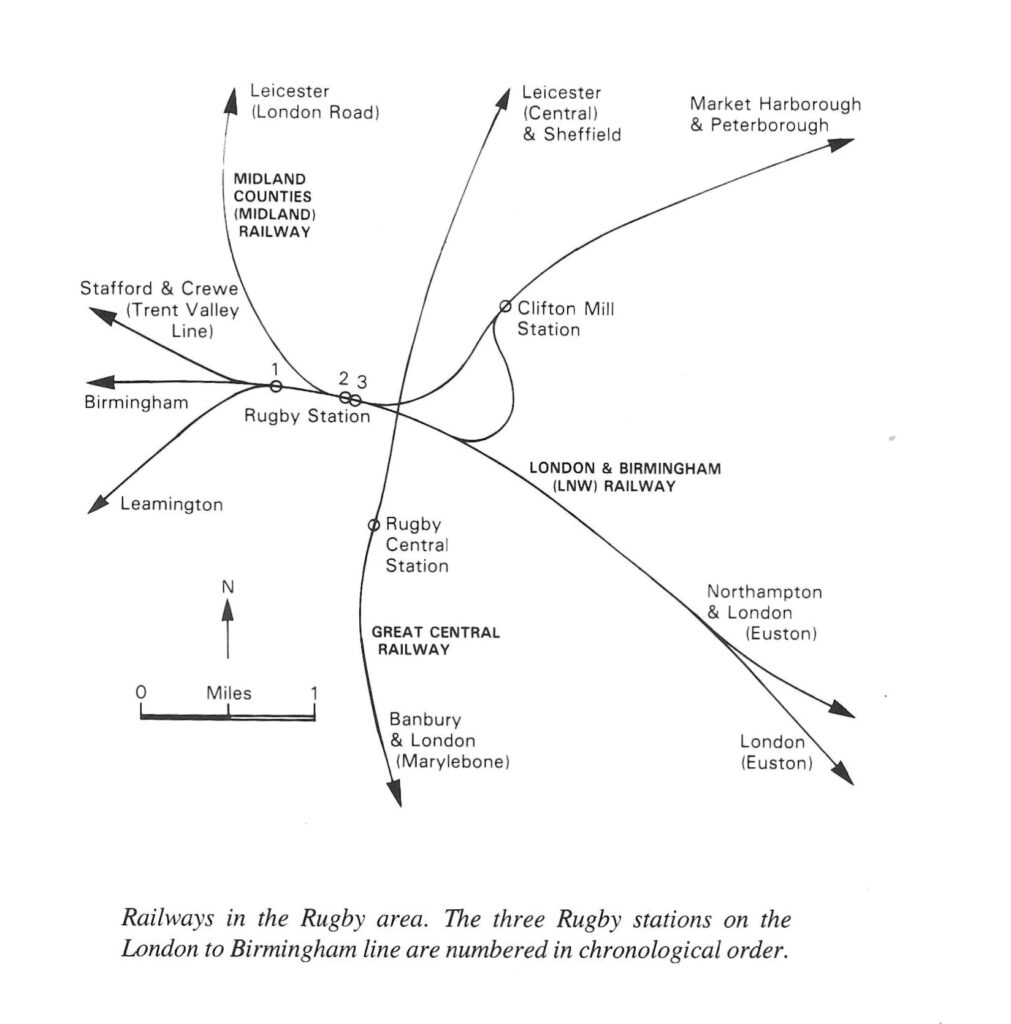
The above map created by Peter H Elliott for his book Rugby’s Railway Heritage. This book has also provided key details for the information below, complementing information gleaned from the Warwickshire Railways Website – see here for specific details on Rugby station.
London and Birmingham Railway
The first railway through Rugby was the Rugby to Birmingham line – which was opened by the London and Birmingham Railway Company in 1838 and was to include a stop at Brandon. The link to London was delayed by issues building the Kilsby Tunnel. By 1913 the Rugby to Birmingham timetable was thus :
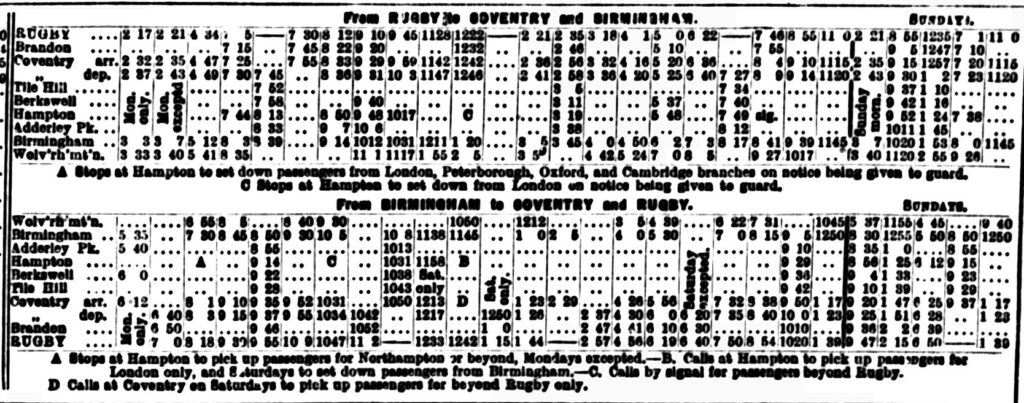
More information on this route can be found on the Warwickshire Railways website here – with specific information on Brandon & Wolston station here.
Midland Railway
The next rail link to Rugby was opened in 1840 by the Midland Railway connecting the towns of Leicester, Nottingham and Derby with the surrounding coalfields as well as to London via a link at Rugby Junction. It was this railway that built the impressive 11 arch viaduct over the Leicester Road and Avon Valley. By 1913 this route was timetabled thus:
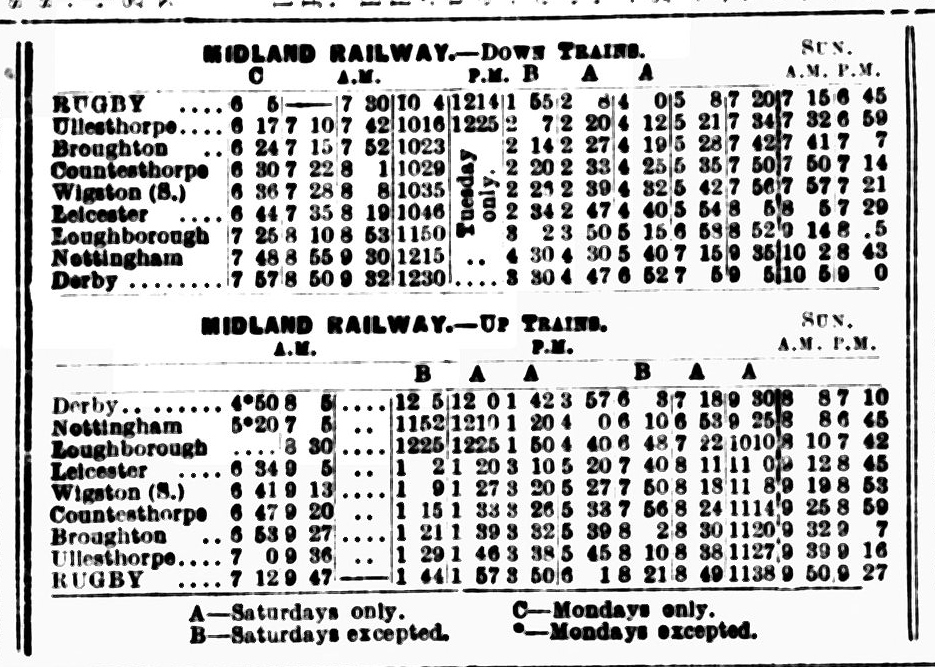
Trent Valley
By the mid 1840s the period of “Railway Mania” began, with many schemes being proposed. The link to Nuneaton and on via the Trent Valley to Cheshire, Liverpool and points North was opened in 1847. It was on this line that the local station near Brinklow was built, at first being named as Stretton station to recognise the proximity to Stretton Under Fosse and the canal wharf known as Stretton Stop. The timetable in 1913 was thus, showing the Up trains from Liverpool to London, and the down trains in the opposite direction. Within two years of the route opening in 1847 the link to Scotland via Preston was also established – thus opening the door to many links over the next century between the Scottish Farming Community and the two villages.


There is more information on this route on the Warwickshire Railways website here, with additional reference to Brinklow station here.
Rugby and Market Harborough
The next link to Rugby was provided in 1850 to Market Harborough via a branch line built by the London and Birmingham railway. It included a 13 arch viaduct near Clifton-upon-Dunsmore and a station at Clifton Mill, linking with a related project from Market Harborough to Stamford with the potential for through trains to the East Coast. The timetables for this line in 1913 were thus.
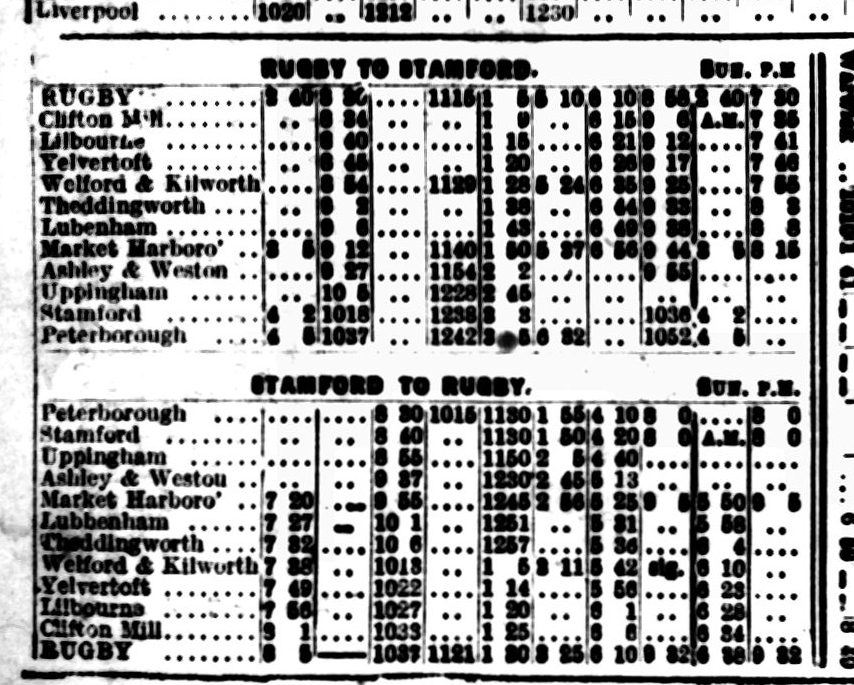
Rugby to Leamington
The Rugby to Leamington route was initially an important coaching route to link the two towns with the Railway at Rugby. When the line from Leamington to Coventry was opened in 1844 this route became less important due to the speed and convenience of the rail connection via Coventry. A line direct from Rugby to Leamington was still seen as desirable though, and steps were taken to raise funding and get parliamentary approval. The line thus opened in 1851 after a delay due to the initial “Railway Mania” period having ended with rather a bump. It did not initially include a station serving Dunchurch. When that did open in 1871 it was almost two miles from Dunchurch itself – although quite close to the southern edge of Church Lawford parish near Potford Dam. More information on this route can be found on the Warwickshire Railways website here, with more information on Dunchurch station here.
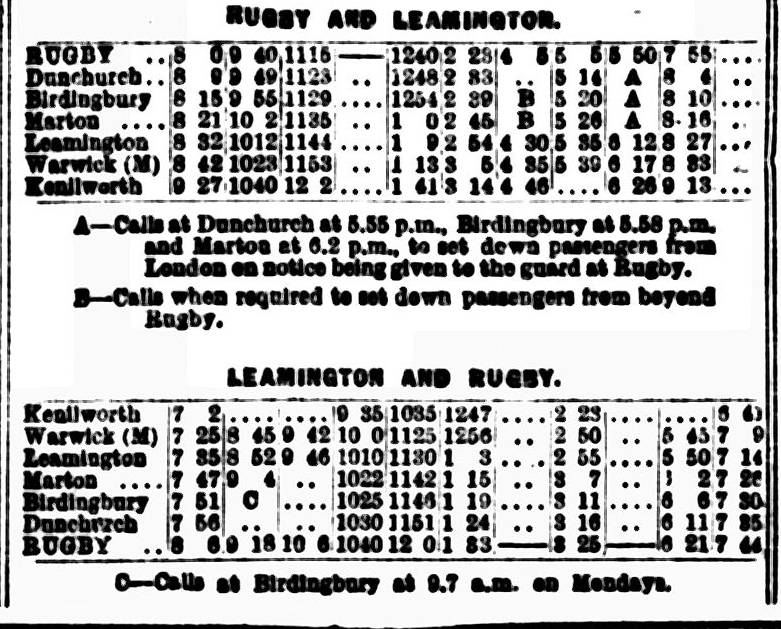
The Great Central Railway
Following the period of rapid rail line creation in the mid nineteenth century, things were rather quieter towards the end of the century, albeit with various mergers and restructuring of the companies involved. However there was still time at the end of the century for a new mainline to be created, linking the existing Manchester, Sheffield and Lincolnshire Railway with London at a newly built Marylebone station. The route that was approved passed through Hillmorton in Rugby, and a new station – Rugby Central – was built there on the new line known as the Great Central Railway – there was no connectivity to other local lines. This Great Central ran roughly parallel to several other lines, and only served a few smaller towns and villages for the first time. The line opened in 1899, and the 1913 timetable was thus:
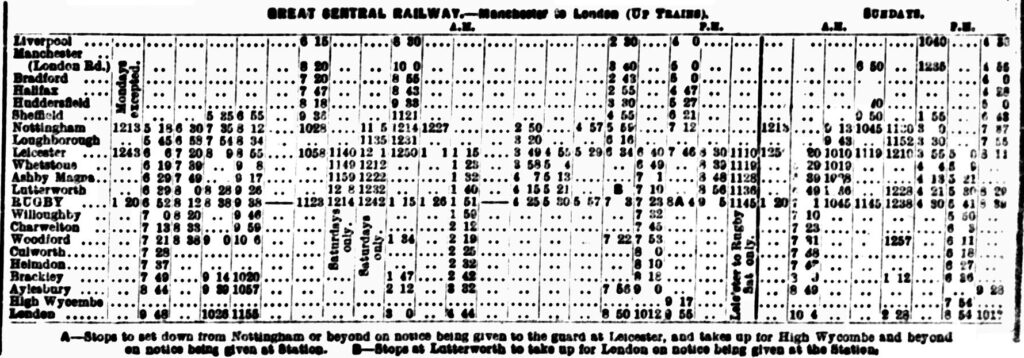

A summary map of the Rugby Area produced by the Railway Clearing House in 1904 is shown below
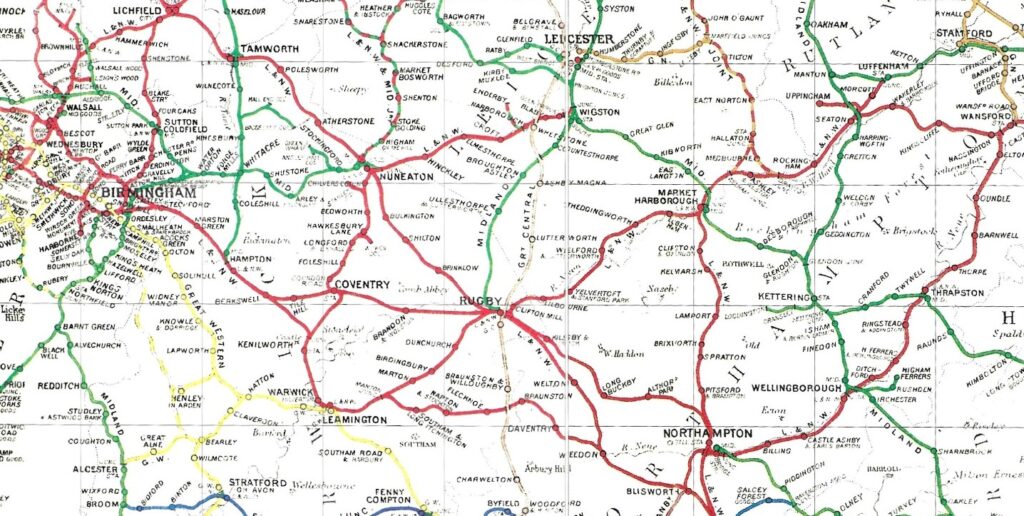
The local Rugby Lines are shown below
